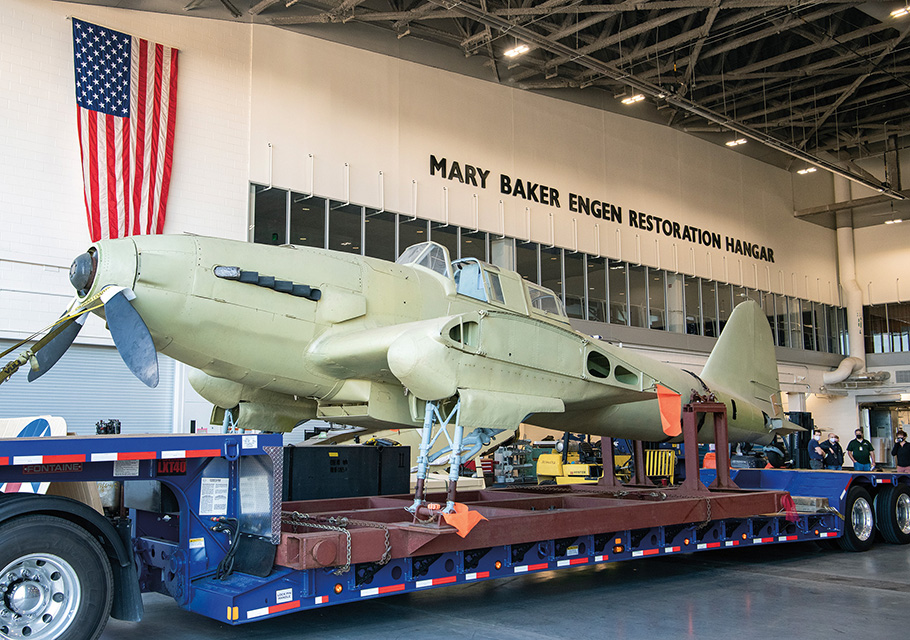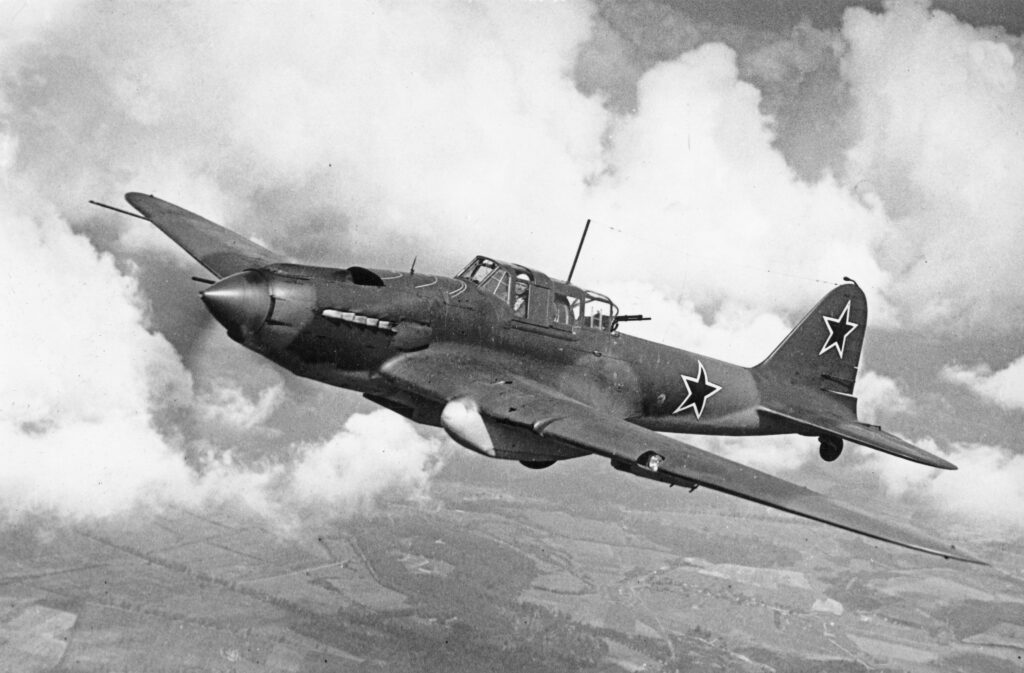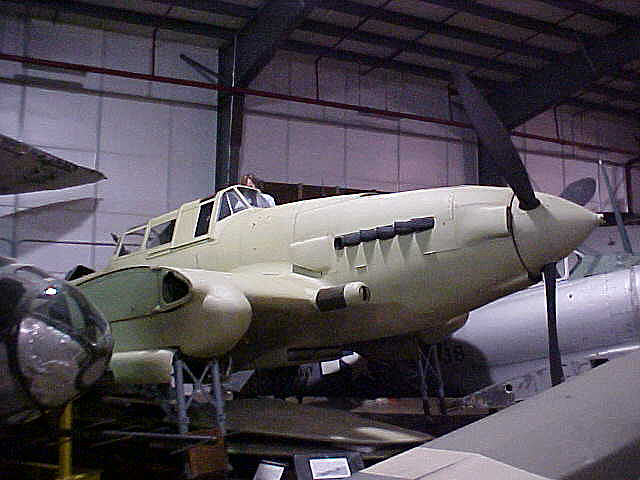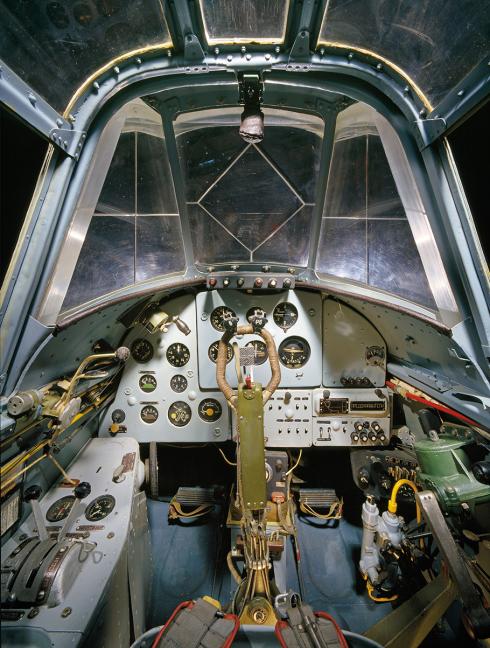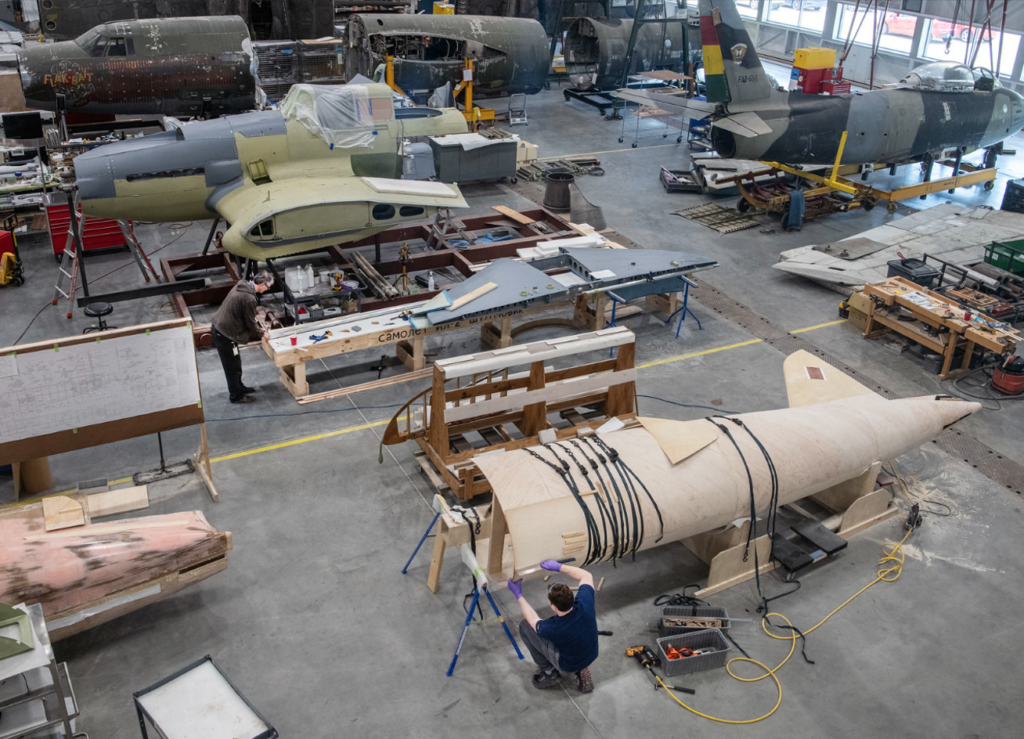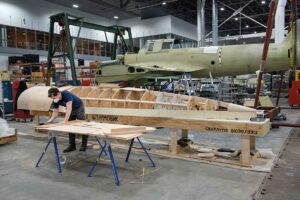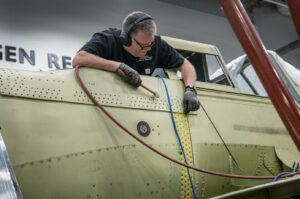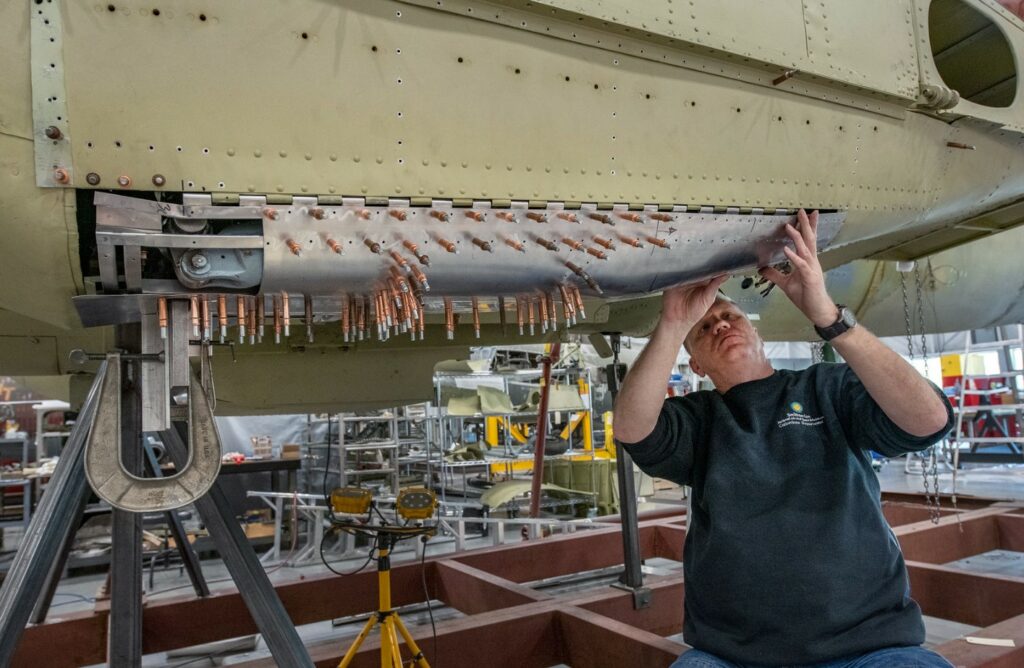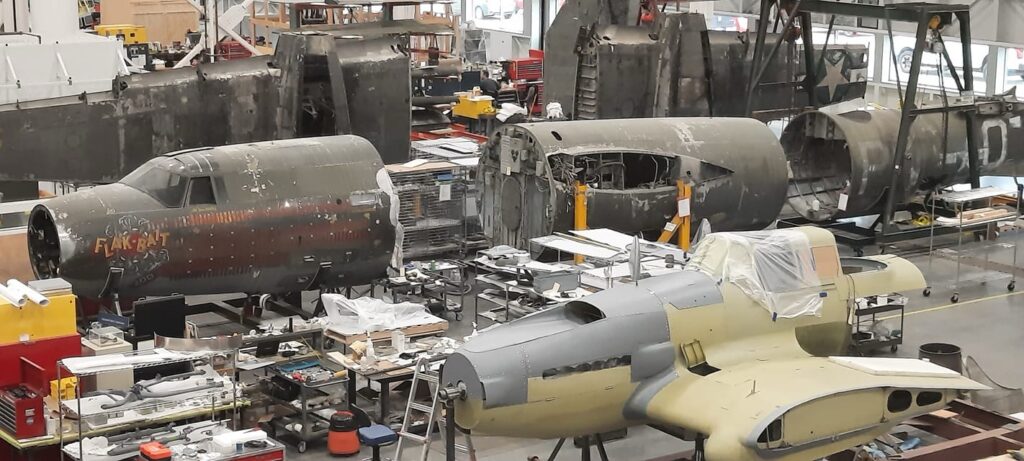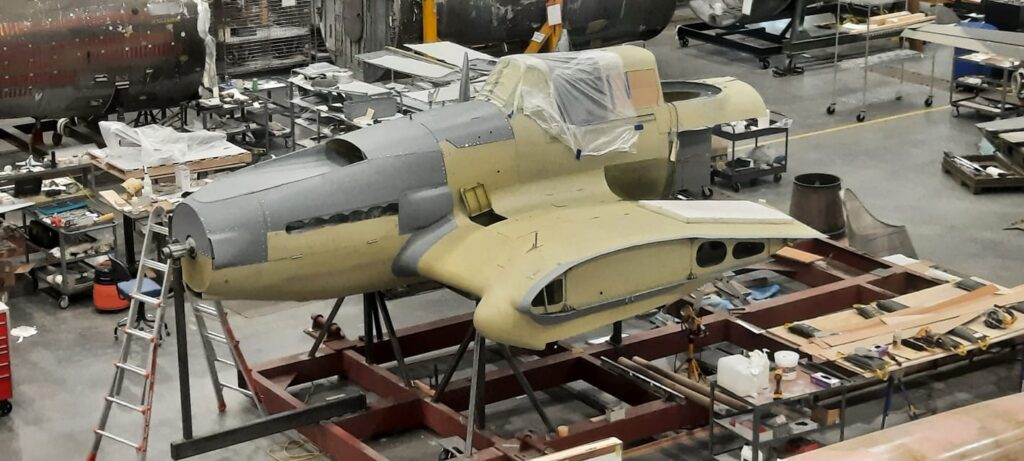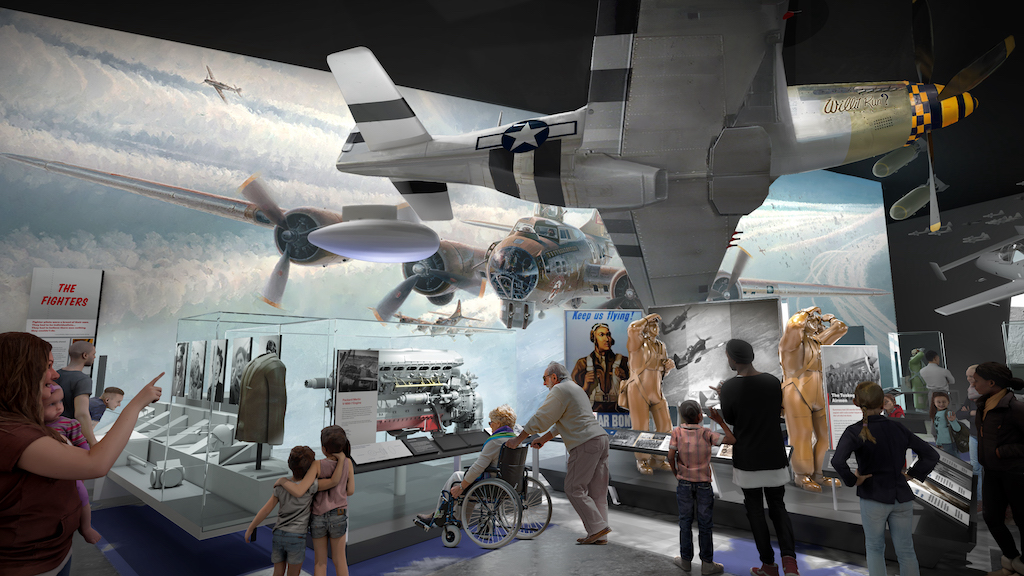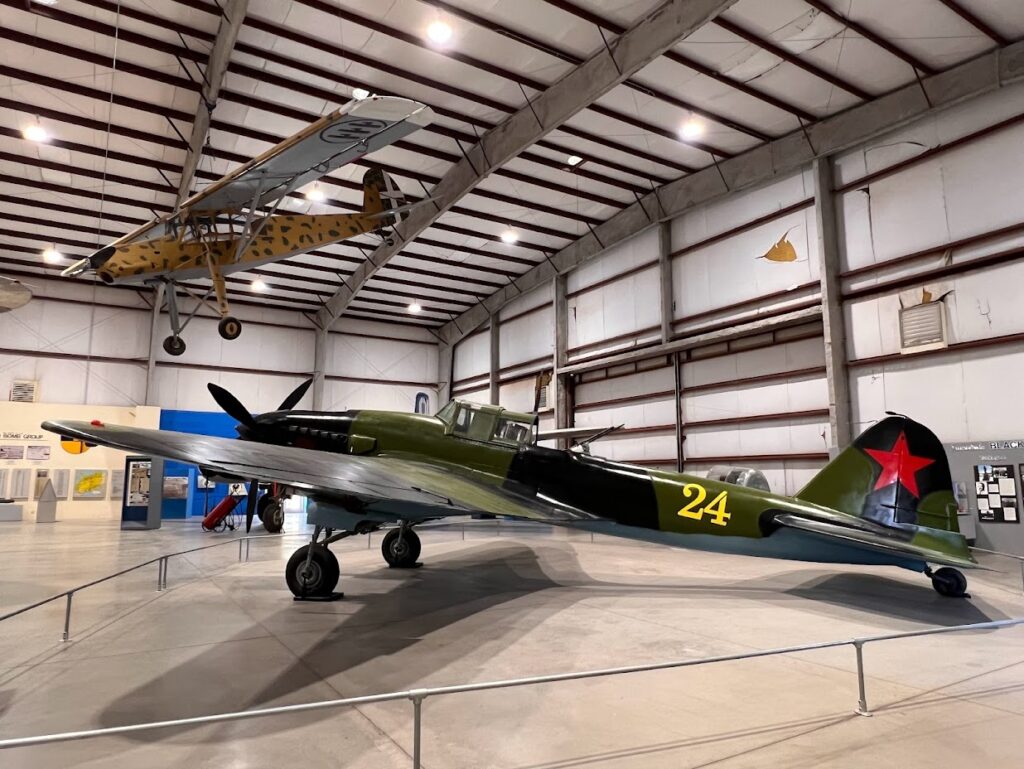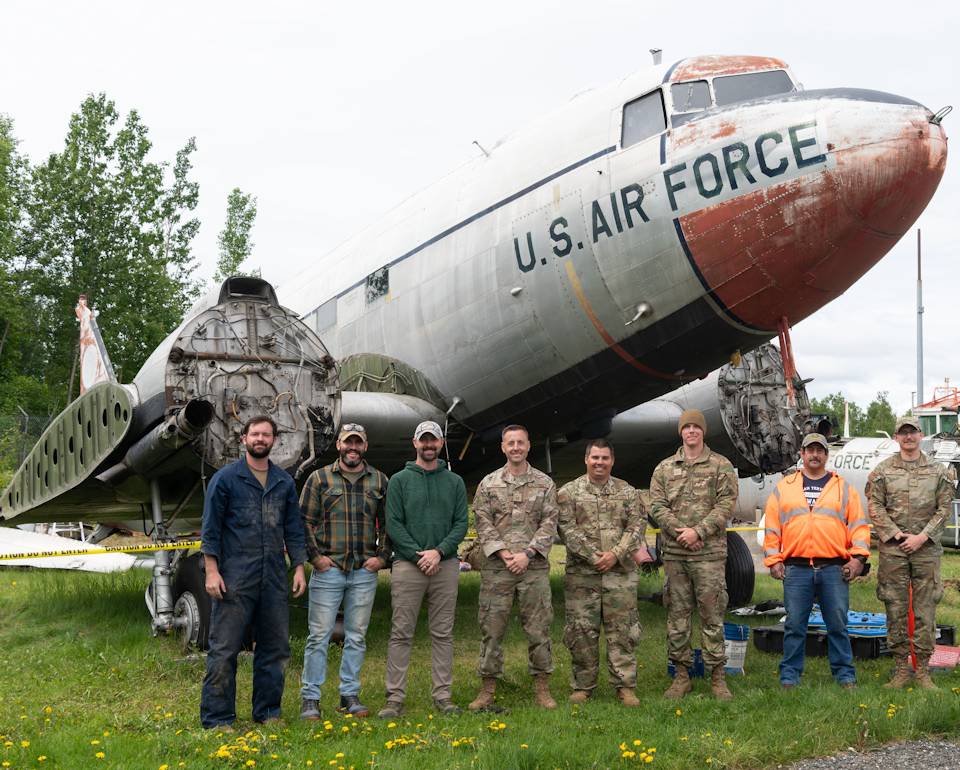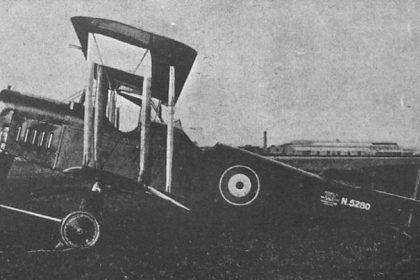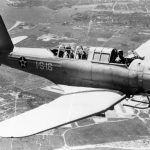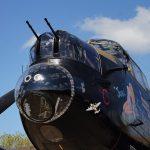By Adam Estes
In the desperate and cataclysmic struggle that was the Eastern Front of World War II, which the countries of the former Soviet Union still call the Great Patriotic War, the Ilyushin Il-2 Shturmovik (Shturmovik being a general term for attack aircraft in the Soviet Air Forces) was deemed by Stalin to be just as vital to the Red Army as air and bread. Designed by a team led by Sergey Ilyushin in 1938, the prototype for what would become the Il-2, then called the TsKB-57, first flew a year later in 1939 and was just beginning to enter production and operational service when Nazi Germany invaded the Soviet Union on June 22, 1941. As the relatively few Shturmoviks built up to that point where rushed into service, most of the factories tasked with building the Il-2s were forced to hastily relocate east of the Ural Mountains, where unskilled workers struggled to keep up with the production quotas sent from the Kremlin, but as the tide of war turned in the Soviets favor, the Shturmovik, much like the T-34 medium tank, would meet the Germans with numbers and determination. They were flown by crews from across the Soviet Union, who served as pilots and rear gunners, while ground crews worked tirelessly to repair and rearm Shturmoviks returning from the front.
Over 36,000 Il-2s of both single-seater and two-seater varieties were manufactured, making it the single-most produced military aircraft in aviation history. With its armored cockpit and engine compartment and wide array of armaments, from 23mm cannons to unguided rockets and various types of anti-personnel and anti-vehicle bombs, the Il-2s provided close air support for Soviet infantry and armored units, and were a vital part of Soviet military aviation, from the defense of Moscow to the Battle of Berlin. After the collapse of Nazi Germany, many Il-2s were exported to the Soviet Union’s new satellite states, such as Bulgaria, Czechoslovakia, Hungary, Poland, Mongolia, and Yugoslavia (though this latter state would soon become a non-aligned nation during the Cold War). The Il-2, which would be codenamed the “Bark” by NATO, also led to the development of the Il-10 (NATO codename “Beast”), which served not only in the latter stages of World War II but in the Korean War as well. A number of Shturmoviks can be found in museums in Eastern Europe, though three examples have made their way to the United States since the collapse of the Soviet Union in 1991, including a single example currently under restoration at the National Air and Space Museum’s Steven F. Udvar-Hazy Center in Chantilly, Virginia.
The identity of the Shturmovik in the Smithsonian is still surrounded by mystery and ambiguity. It is a composite aircraft made from the remains of three or four Shturmoviks recovered from the bottom of lakes near Leningrad and Murmansk in the early 1990s. With the fall of the Iron Curtain, it suddenly became easier for Western warbird collectors and restorers to recover wrecks of German and Soviet aircraft from the battlefields of the Great Patriotic War. In addition, it opened once-classified former Soviet archives to Western historians. And while more wrecks would be recovered up to the present day, the current situation with the Russo-Ukrainian War and the subsequent sanctions from NATO countries in response to Russia’s aggression has made it increasingly difficult for old wrecks to leave Russia or for Western scholars to visit those same archives.
However, during the 1990s, a Russian team of restorers would reassemble a Shturmovik in St. Petersburg (formerly Leningrad) out of several recovered wrecks. At the time, the Smithsonian was informed by Russian sources that the basis for their Shturmovik had been one that had been shot down on the Leningrad front on March 15, 1944, while being flown, and was being flown by Lt. Ivan Maksimovih Andreyev and Sgt. Goncharov. Later investigative work has revealed that there was little information to substantiate the story, and with no data plates recovered from the wrecks, the National Air and Space Museum has since retracted their earlier stance. Another complicating factor in terms of the restoration was the way in which the aircraft was assembled in Russia. In the article The Flying Tank, written by James R. Chiles in the June 2022 issue of Air and Space Quarterly, restorer Bill Hadden said, “It appears that they used paint stripper and sand blasting and whatever was needed to remove corrosion and old paint before rebuilding the airplane…. For instance, the serial number was painted on in several places when they were manufactured…. With essentially all the original paint removed, we may never know the identity of our airplane or its particular service history.” Nevertheless, the Russians installed an original, albiet non-operational, Mikulin AM-38 V-12 inline engine, reassembled the landing gear, and refurbished the cockpit. After decades of submersion in the frigid Russian waters, the wooden tail assembly had fallen apart, so a new assembly was built. Following all of this, the reassembled Shturmovik was coated in primer, but the final paint scheme was never completed because a deal had been made for the Smithsonian in a trade agreement.
In the spring of 1995, the still-unpainted Shturmovik arrived at the Paul E. Garber Preservation, Restoration, and Storage Facility in Suitland, Maryland. At the time it had gone to the Garber Facility, aviation enthusiasts could go on pre-arranged, docent-led public tours of the facility’s numerous warehouses and its restoration shop. But in 2003, with the opening of the Steven F. Udvar-Hazy Center near Dulles International Airport in Chantilly, Virginia, the tours gradually came to an end, and those aircraft that had not gone to Dulles before the opening of the massive new museum would remain at Garber, away from public view.
The beginning of the ongoing renovations to the National Mall location would see some aircraft pulled out of Garber to be eventually displayed either at the National Mall or at the Udvar-Hazy Center, and with a new layout in store for the museum’s World War II in the Air gallery, the Smithsonian’s Shturmovik seemed the perfect fit to bring light to the Soviet perspective of World War II aviation. On November 18, 2021, the Il-2 arrived at the Steven F. Udvar-Hazy Center’s Mary Baker Engen Restoration Hangar, where visitors can view the ongoing restoration projects from a second-story glass mezzanine.
After it arrived in the Engen Restoration Hangar, NASM restoration specialists began analyzing the Shturmovik and preparing it for restoration. In this evaluation, the wooden tail reproduced by the Russian team in St. Petersburg was considered to be a poor facsimile with numerous structural problems. Luckily for the Smithsonian, enthusiasts of the Shturmovik were willing to help, providing access to manuals and reference materials, which would provide valuable information once translated into English.
The restoration staff has received further assistance from the Pima Air and Space Museum of Tucson, Arizona, which is home to another Il-2 recovered from the Eastern Front. Pima provided the NASM restoration team with digital copies of their engineering drawings used in their own restoration. These have been especially helpful in the refabrication of the tail action, which differs only from those built in wartime Soviet factories with the use of modern epoxy resin as opposed to water-based wood glues.
The restoration has also revealed traces of the original paint on several components, with the standard black, brown/tan, and green scheme on the upper surfaces of the aircraft, and the light blue paint on the underside. The Smithsonian intends to replicate this scheme, which was common on most Shturmoviks of the mid to late-war period. Other discoveries made during the restoration have led NASM officials to conclude that the aircraft was assembled in late 1943 at Zavod No.18 (Factory No.18) at Samara (known during the days of the USSR as Kuybyshev).
[wbn_ads_google_three]
When the Shturmovik is complete, it will be placed on public display for the first time at the National Mall location’s upcoming Jay I. Kislak World War II in the Air Gallery alongside several other aircraft, including the Messerschmitt Bf 109G-6 flown by French defector René Darbois (previously covered here: Smithsonian’s Bf 109 Unveils a Hidden Story of Resistance ), the museum’s North American P-51D Mustang and General Motors FM-1 Wildcat.
With the IL-2, the Soviet perspective of WWII/Great Patriotic War, made all the more prescient by the current war between Russia and Ukraine being fought on some of the same battlefields in which Soviet aircrews flew their Shturmoviks against the Germans, can be told in ways that the original gallery, opened in 1976, was unable to do. Among the stories of Soviet aircrews that the museum intends to highlight is that of Anna Yegorova, who after flying reconnaissance missions in the Polikarpov U-2/Po-2 biplane, would fly 41 of her 277 combat missions in Shturmoviks until she was shot down in August 1944, and was held as a prisoner in the Küstrin sub-camp of the Sachsenhausen concentration camp, until it was liberated in January 1945. Like many Soviet POWs, Yegorova was interrogated by the NKVD, and it would be twenty years before she was awarded the Hero of the Soviet Union, the country’s highest military decoration.
Besides the example being restored at the National Air and Space Museum, there are two more Il-2s in the United States. Il-2m3 s/n 305401 has been restored to airworthiness at the Flying Heritage and Combat Armor Museum in Everett, Washington, along with parts of three other Shturmovik wrecks and powered by a Jose Flores-built Allison V-1710 in lieu of the original Mikulin AM-38 V-12 engine. The other is the aforementioned example in the Pima Air and Space Museum in Tucson, Arizona, and is currently on static display in the museum’s Hangar 3.
For more information on the Shturmovik and other projects, visit Homepage | National Air and Space Museum (si.edu).
Special thanks to Dr. Alex Spencer for his contributions to the making of this article.







